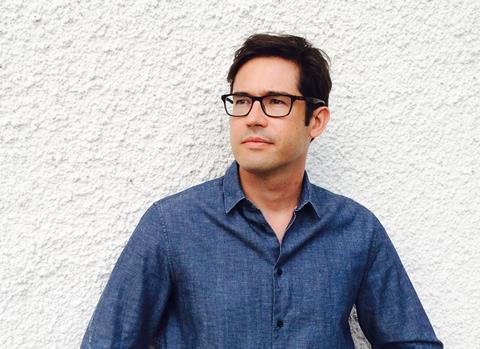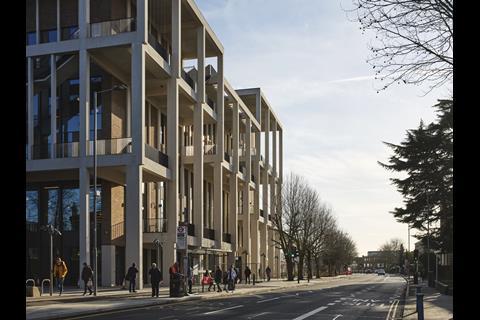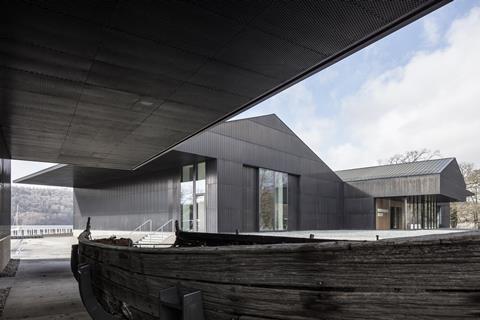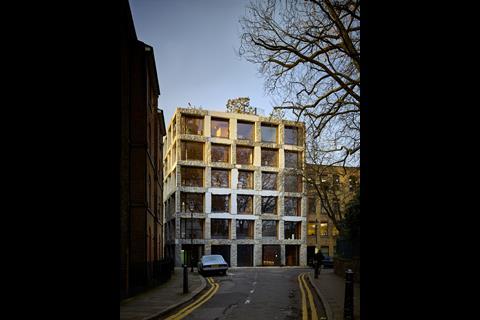This year’s wide range of shortlisted buildings makes it harder than ever to pick a Stirling Prize winner, but Ben Flatman believes there are two main contenders
The 2021 Stirling Prize shortlist contains a typically eclectic mix of projects. While I have no issue with architectural prizes in principle, I have sometimes wondered how the Stirling judges are supposed to weigh the merits of such a wide range of different building typologies.
This year’s list pitches a museum of boats on Lake Windermere against a suburban mosque in Cambridge, and a student study centre in Kingston against a bridge in Tintagel. They are all interesting but are also so diverse as to make direct comparison seem a bit meaningless.
However, this is the Stirling, and the real purpose is of course not really some objective evaluation process, but rather a very subjective celebration of the depth and breadth of architectural work across the UK (although it is all in England this year). Interestingly, the 2021 shortlist also heralds a slight change in the nominations process, with all future nominees required to be at least 12 months post practical completion.
It will be interesting to see whether, as in other recent years, there ends up being some kind of political statement underlying the choice of winner

And, if this shortlist seems a little like a blast from the past, that is because – after a year’s covid-induced absence – these contenders have been drawn from buildings originally eligible for the cancelled 2020 prize. If that is not quite enough time for the buildings to have properly bedded in, it should at least provide the judges with a little extra perspective from which to make their decisions.
It will be interesting to see whether, as in other recent years, there ends up being some kind of political statement underlying the choice of winner. It is hard to ascertain any particular covid influence on the shortlist, but Stanton Williams’ key worker housing in Eddington, Cambridge, might tick the box.
If the judges are keen to deliver a pot-banging “thank you NHS” type message, then this must be the lead contender.
>> Read: Stirling Prize shortlist announced
>> Building study: Stanton Williams’ Eddington key worker housing
In stark contrast to 2019’s Goldsmith Street, which was all about traditional terraced housing, Stanton Williams’ scheme is made up of a series of rectilinear blocks in the high modernist tradition. While it is great to see quality new housing for those who really need it, you have to wonder what exactly lifts the architecture above the simply virtuous to the truly exceptional (not that this has been an object to winning in the past).
Another of the contenders, Groupwork’s 15 Clerkenwell Close, must surely be the first Stirling nominee to have faced the threat of demolition before the shortlist was even announced. Fortunately, a protracted and seemingly entirely spiteful campaign to have the building pulled down has failed. For my money this is one of the most enjoyable and provocative buildings on the list.
>> Read: Amin Taha wins fight to save Clerkenwell Close
The use of loadbearing stone masonry is on the one hand wonderfully fogeyish, while at the same time executed in an entirely contemporary way. It feels both materially and conceptually hefty in a way that we rarely see in British architecture, where technology and form making often seem to be a stand-in for genuine substance. The building is also infused with a post-modern sense of history and context, which might be a reason for some judges not to like it.
Marks Barfield’s Cambridge mosque showcases the practice’s love of structural playfulness, and the main interior is undoubtedly beautiful. But it is hard to avoid the jarring effect of where the sinuous timber structure meets the underwhelming box in which it sits. Crenulated brick elevations and a rather awkward dome reinforce the sense of the interior and exterior having been designed by different architects.
>> Read: Building study: Marks Barfields’ Cambridge mosque
I have always felt that bridges really deserve their own separate prize. But such objections crumble in the case of Ney & Partners and William Matthews Associates’ new bridge at Tintagel. While part of me wonders whether the addition of a high-level link has not taken away a little of the site’s romance, it is impossible not to be seduced by this structure, with its slate paved walkway and teasing midpoint gap, where the bridge’s two cantilevered halves don’t quite meet.
>> Read: Building study: Ney & Partners and William Matthews Associates’ Tintagel bridge
The Stirling has been won by a bridge before, and this is surely even better than Wilkinson Eyre & Gifford’s winking eye in Gateshead. But is it architecture or simply exquisite and beautifully detailed engineering?
>> Read: Building study: Grafton Architects’ Kingston Town House
Universities have been pushing a range of new hybrid typologies recently, including mixing study areas with social and cultural gathering spaces. The Town House at Kingston University by Grafton is another interesting contribution to this evolving typology.
Judging what might stand the test of time and still be inspiring interest in years from now is always hard to tell
Like a lot of architects, I have a thing for black sheds, so what’s not to like about Carmody Groarke’s Windermere Jetty Museum? Housing a quirky collection of historic boats, and a nice café, it ticks all the boxes of an expertly executed new cultural attraction. A safe choice, even if it looks like it belongs in Suffolk.
>> Read: Building study: Carmody Groarke’s Windermere Jetty Museum
Judging what might stand the test of time and still be inspiring interest in years from now is always hard to tell, but my instinct is that 15 Clerkenwell Close could have that intangible quality of an enduringly well-regarded winner. But the sheer bravado and breath-taking beauty of the Tintagel bridge might still win the day.
In any case, after a 12-month wait, the Stirling is thankfully back.






















1 Readers' comment